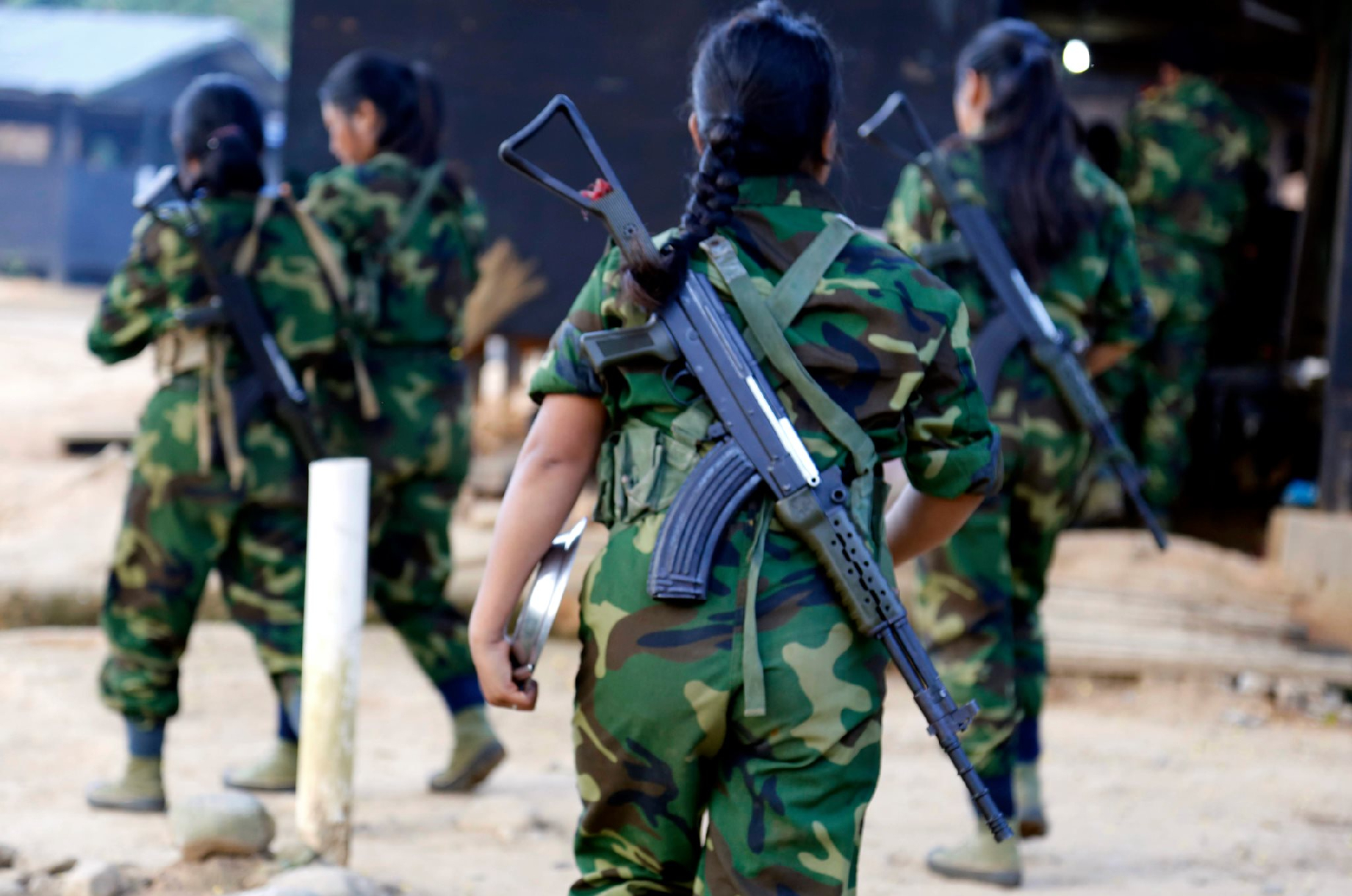
The Kachin Independence Army (KIA) has overrun two junta bases in Shan and Kachin states over the past week, even as it continues to defend its headquarters on the Chinese border.
On October 19, troops from KIA Brigade 6’s Battalion 36 mounted an assault on a regime base on Weinlar Hill in Shan State’s Muse Township, according to a member of an allied armed group.
In fighting that started at around 6am, the KIA troops came under heavy artillery fire and aerial attack, but managed to take control of the base by 2pm.
“They were able to capture the base and seize a lot of weapons and ammunition,” said a fighter from the Kachin People’s Defence Force, noting that the base was manned by around 60 soldiers and has heavy artillery placements and a helicopter landing field.
The next day, however, an airstrike on a KIA Brigade 6 camp near Tima, a village in Muse Township, reportedly killed five people, including several KIA fighters.
On the same day as that incident, KIA forces and their allies captured another junta base near Nam Sang Yang, a village about 20km from Laiza, the KIA’s headquarters in Kachin State.
The KIA’s chief of staff, Khaung Lun, claimed that more than 100 junta soldiers were killed in the fighting and that enough weapons and ammunition had been captured to arm an entire People’s Defence Force (PDF) Battalion, according to Yee Mon, the defence minister of the anti-regime National Unity Government (NUG).
“Dear Minister, the information-compiling process has not been completed yet, but we will have enough weapons, both small arms and big arms, to equip a PDF battalion,” the KIA chief of staff was quoted as saying in a Facebook post by Yee Mon on Wednesday.
The allied force responsible for the assault on the strategically important Aungja base near Nam Sang Yang included PDF fighters under the command of the NUG, as well as members of the All Burma Students’ Democratic Front, the Arakan Army, the Chin National Front, and the Kuki National Army.
The junta later released a statement admitting that its troops had been forced to abandon the two bases after coming under repeated attack by heavily armed resistance forces.
The loss of the Aungja base was especially significant, as it represented a major setback for the regime’s efforts to gain control of Nam Sang Yang, which is located on the Myitkyina-Bhamo road and is seen as a gateway to Laiza.
Since July, the junta has mounted a major offensive in the area, sending in more than 1,000 troops in a bid to neutralise the KIA, which has played a major role in supporting armed resistance groups that have emerged in the wake of the February 2021 coup.
According to KIA information officer Colonel Naw Bu, regime forces have left the area around Nam Sang Yang since the fall of the Aungja base.
“There are no junta troops in Nam Sang Yang now, only KIA troops,” he told Myanmar Now.
Meanwhile, reinforcement columns sent from Myitkyina and Waingmaw townships have also been forced to stop near Ka Tsu Yang, a village about 60km from Nam Sang Yang, due to KIA attacks, he added.
On October 9, nearly 30 civilians were killed and more than 50 injured in a nighttime junta attack on Mung Lai Hkyet, a village just north of Laiza. At least 11 of the dead were children, many of them sheltering in a camp for internally displaced persons.
That attack came almost a year after regime airstrikes killed dozens of people at a music festival in Hpakant Township held to mark the anniversary of the founding of the Kachin Independence Organisation, the political wing of the KIA.
A Nang Pa, the area where that incident occurred, was also targeted by junta airstrikes on October 16 of this year, resulting in the death of several KIA officers.
On Tuesday, there were reports that the KIA had seized control of a junta base in Mansi Township near the town of Bhamo. However, Naw Bu, the KIA information officer, said he could only confirm that fighting had taken place.
There has definitely been a battle there, but we have not yet received word on whether or not the base was captured. Communications in the area are poor,” he said.
